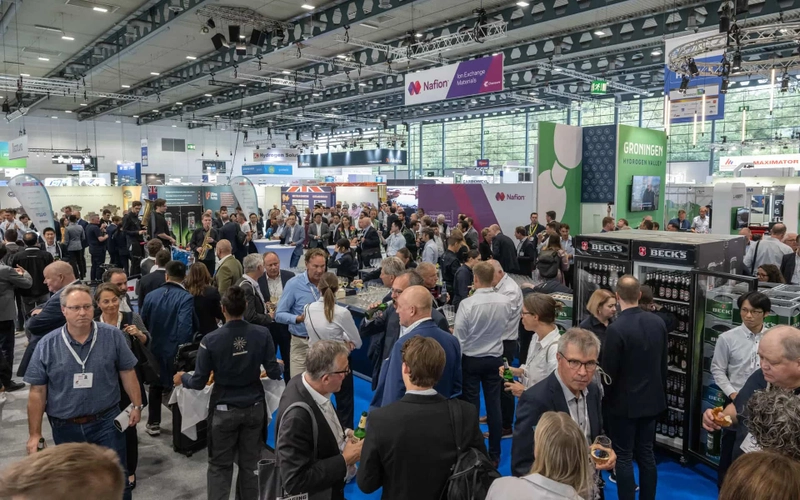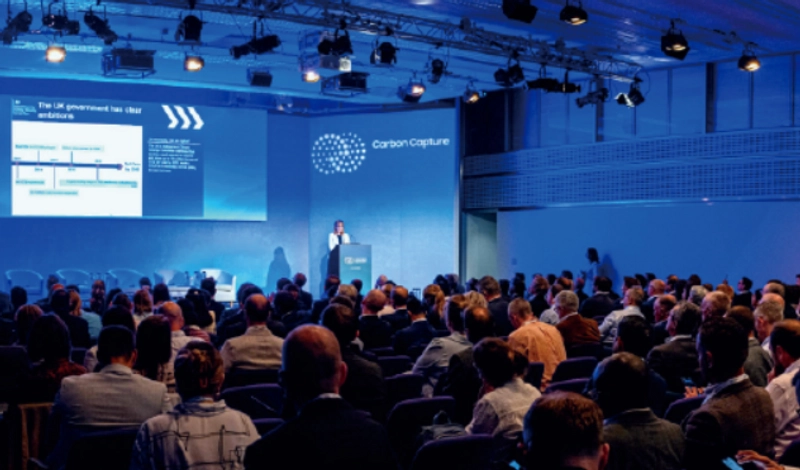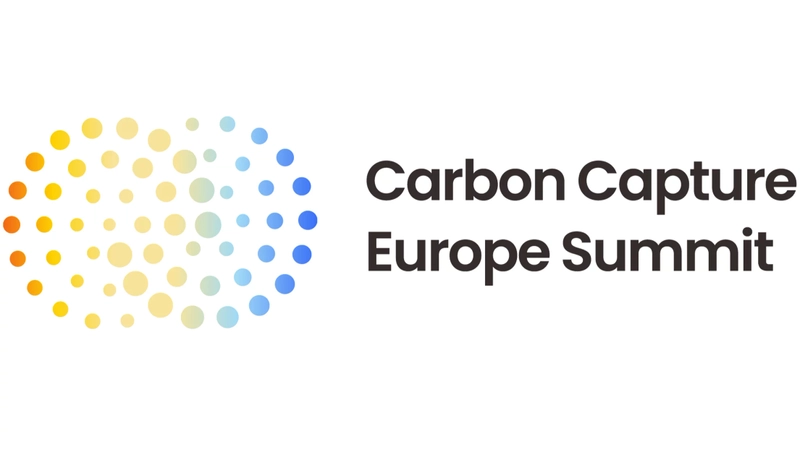The Carbon Capture Europe Summit 2025: Advancing Carbon Capture, Utilisation, and Storage for a Net-Zero Future
Carbon Capture, Utilisation, and Storage (CCUS) plays a pivotal role in Europe's strategy to achieve net-zero CO2 emissions by 2050. As industries and governments strive to mitigate the effects of climate change, CCUS offers a practical and scalable solution for decarbonizing some of the most challenging sectors, such as steel, cement, power, and chemicals. These industries, which are integral to the European economy, must reduce their emissions significantly to meet climate targets. To foster collaboration and drive innovation in this critical area, the Carbon Capture Europe Summit 2025 (CCES2025) will take place from 29-30 April at the prestigious KIT Royal Tropical Institute in Amsterdam.
This summit stands as Europe's leading event for advancing CCUS development and is set to bring together over 450 C-suite executives, policymakers, industry leaders, and financial experts. These stakeholders will focus on creating solutions to accelerate Europe's transition to a carbon-neutral future. The summit will delve deep into EU's strategic priorities, examining the role of CCUS in tackling emissions, exploring regulatory frameworks, discussing the latest technological innovations, and outlining investment strategies that are essential for driving this energy transformation.
The Role of CCUS in Europe's Climate Strategy
The EU Industry Carbon Management Strategy emphasizes the necessity of Carbon Capture, Utilisation, and Storage to decarbonize hard-to-abate sectors. These sectors, including steel production, cement manufacturing, power generation, and chemicals, are critical to the functioning of modern economies but face challenges in reducing emissions through traditional methods alone. By capturing CO2 emissions at the source, these industries can contribute significantly to the EU's overall emissions reduction targets. This is especially crucial in the context of achieving net-zero emissions by 2050, which requires the full engagement of all sectors of the economy, including those traditionally harder to decarbonize.
The CCUS strategy involves three key components:
Carbon Capture: The process of capturing CO2 emissions directly from industrial processes or power generation.
Carbon Utilisation: The use of captured CO2 in various industrial applications, such as creating synthetic fuels or chemicals, thus turning waste into valuable products.
Carbon Storage: The safe and long-term storage of CO2 in underground geological formations, ensuring that the captured CO2 does not contribute to atmospheric pollution.
The EU Commission's Green Deal and the EU Emissions Trading Scheme (ETS) emphasize the integration of CCUS technologies across sectors to reach the climate neutrality goal. This makes the technology a crucial component of Europe's climate strategy. With CCUS technologies advancing rapidly, the need for collaboration between industry leaders, policymakers, and financial institutions is more pressing than ever.
The Carbon Capture Europe Summit 2025: A Platform for Innovation and Collaboration
The Carbon Capture Europe Summit 2025 will serve as a vital meeting point for all stakeholders in the CCUS ecosystem. Over the course of two days, the summit will feature high-level discussions, keynote presentations, workshops, and panel sessions, where thought leaders will address the latest developments in CCUS technologies and their role in decarbonizing Europe's industrial landscape.
Key Themes and Focus Areas of CCES2025
The conference's agenda will center around the following core themes:
1. Regulatory Frameworks and Policy Development
With the accelerating push for decarbonization, there is an urgent need for policy clarity and regulatory frameworks that support the widespread adoption of CCUS technologies. At the summit, participants will discuss the EU's regulatory landscape and explore how policymakers can establish a clear roadmap for scaling up CCUS projects across Europe. This includes topics such as:
EU carbon pricing mechanisms and their impact on CCUS development.
Government incentives and subsidies for CCUS projects.
Cross-border regulations for the transport and storage of CO2.
2. Technological Innovations in CCUS
Innovation is at the heart of the transition to a low-carbon economy. The summit will provide a platform to showcase the latest technological breakthroughs in carbon capture technologies and the utilization of CO2. Industry experts will share insights into:
Next-generation capture technologies: How advancements in solvents, membranes, and direct air capture are making CO2 capture more efficient and cost-effective.
Carbon utilization: Exploring innovative methods for using captured CO2 in the production of valuable products, such as synthetic fuels, building materials, and chemicals.
Digitalization and AI applications in optimizing the efficiency of CCUS processes.
3. Investment Strategies and Financial Mechanisms
The scale of investment required to implement CCUS technologies across industries is significant. The summit will provide insights into the financing opportunities available for CCUS projects, including private investment, government funding, and public-private partnerships. Topics of discussion will include:
Identifying financial models for large-scale CCUS projects.
The role of green finance and sustainable investment in the development of CCUS technologies.
How the financial community can support the commercialization of CCUS technologies and facilitate the widespread adoption of decarbonization solutions.
4. Collaboration Between Industry, Government, and Academia
The CCES2025 summit will emphasize the importance of collaboration between different sectors, including government, industry, and academia, in driving CCUS development forward. Key sessions will focus on:
Multi-stakeholder partnerships for scaling up CCUS infrastructure.
Joint efforts to reduce operational costs and overcome technical barriers to CCUS implementation.
The role of research and development in accelerating technological advancements and bringing innovations to market.
Networking Opportunities at CCES2025
Beyond the conference’s educational and technical aspects, CCES2025 offers a valuable networking opportunity for participants. With over 450 C-suite executives, government representatives, and industry leaders attending, the summit provides an excellent platform for forging new partnerships, identifying investment opportunities, and collaborating on joint ventures aimed at advancing CCUS solutions.
The networking sessions will allow attendees to meet with key industry players, including those involved in carbon capture technologies, energy transition initiatives, sustainable finance, and infrastructure development. It is an opportunity to foster cross-sector collaborations that will drive the large-scale implementation of CCUS technologies across Europe.
Conclusion: Paving the Way for a Carbon-Neutral Europe
The Carbon Capture Europe Summit 2025 is set to be a crucial event in shaping the future of Carbon Capture, Utilisation, and Storage in Europe. With a focus on regulatory frameworks, technological innovations, and investment strategies, the summit will bring together industry leaders and policymakers to accelerate Europe's transition to a carbon-neutral future. As the EU and its member states work towards meeting net-zero emissions by 2050, CCUS will undoubtedly play a pivotal role in decarbonizing some of the most challenging sectors.
The summit serves as an important venue for collaboration, knowledge sharing, and forging partnerships that will drive CCUS adoption across Europe. By focusing on actionable solutions and innovative strategies, the Carbon Capture Europe Summit 2025 will contribute to achieving a sustainable, low-carbon future for Europe and beyond.

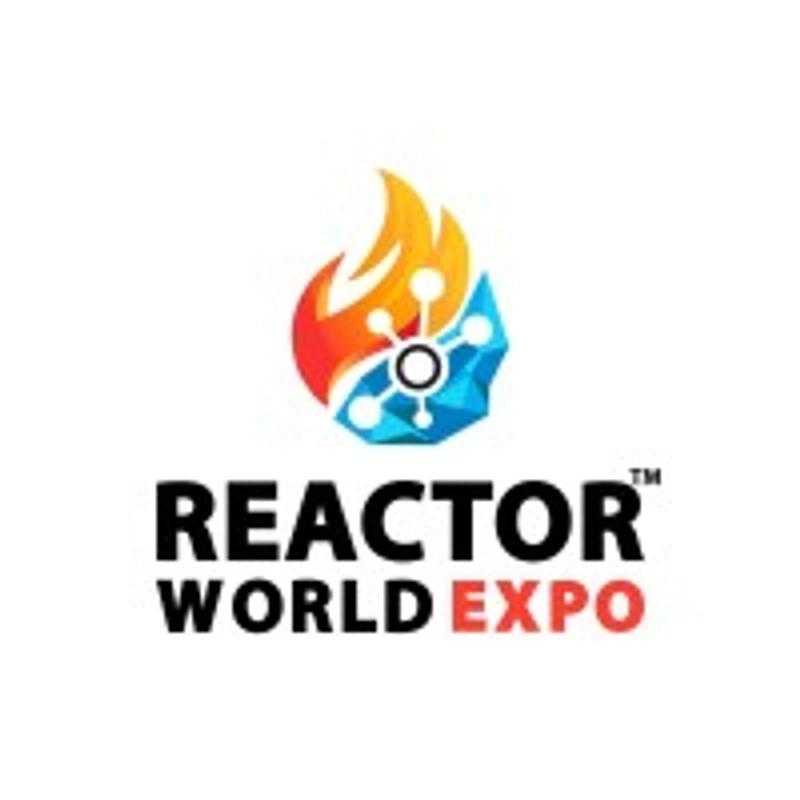
Reactor World Expo
At the REACTOR WORLD EXPO, the focus is on pushing the boundaries of innovation in chemical reactor technology, creating an essential platform for industry professionals, researchers, and manufacturers to showcase their latest advancements. The chemical sector plays a critical role in the development of many industries and has a significant impact on economic growth. Over recent years, the sector has witnessed impressive growth, and it is expected to maintain its momentum, driven by continued technological advancements and strategic collaborations. The expo serves as a testament to the sector’s dynamic nature, reflecting the growing importance of chemical reactor technology in various industrial applications.
The event will present a broad array of chemical reactors, ranging from small-scale laboratory models to large, industrial reactors, catering to a wide spectrum of needs within the industry. With the increasing demand for more efficient and sustainable chemical processes, the REACTOR WORLD EXPO is set to explore the latest technologies designed to enhance reactor performance, improve safety standards, and optimize energy use. It provides a unique opportunity for participants to witness firsthand the cutting-edge developments in reactor design and manufacturing, offering a glimpse into the future of the chemical engineering landscape.
A key feature of the expo is its emphasis on quality assurance (QA) and quality control (QC) within the reactor industry. As chemical reactors are integral to the production of countless products, from pharmaceuticals to energy materials, ensuring their safety and operational efficiency is crucial. The event will foster in-depth discussions on best practices for maintaining high standards in QA and QC, addressing the challenges faced by manufacturers, and highlighting new tools and methods for improving reliability and performance. This focus on quality will be vital for those involved in the design, production, and operation of reactors, as they seek to meet the ever-increasing demands for precision, safety, and cost-effectiveness.
Another prominent theme of the REACTOR WORLD EXPO is the growing collaboration between research institutions and manufacturers. This synergy is leading to the development of more sophisticated reactor systems and applications, which are opening up new avenues for the global flow chemistry market. As research and industry alliances continue to evolve, the expo will serve as a key venue for sharing insights and discussing the latest findings in reactor technology, with an emphasis on the practical implications of these advancements. These partnerships are expected to accelerate innovation in the field, providing solutions that will shape the future of chemical processing.
The global flow chemistry market is anticipated to experience substantial growth in the coming years, driven by the increasing demand for sustainable and efficient chemical processes. The REACTOR WORLD EXPO will highlight these trends, showcasing how the latest innovations in reactor technology are meeting the needs of industries such as pharmaceuticals, energy, and materials science. By facilitating collaboration and dialogue between leading experts, the event will provide valuable insights into the direction of the market and the technologies that are set to dominate in the future.

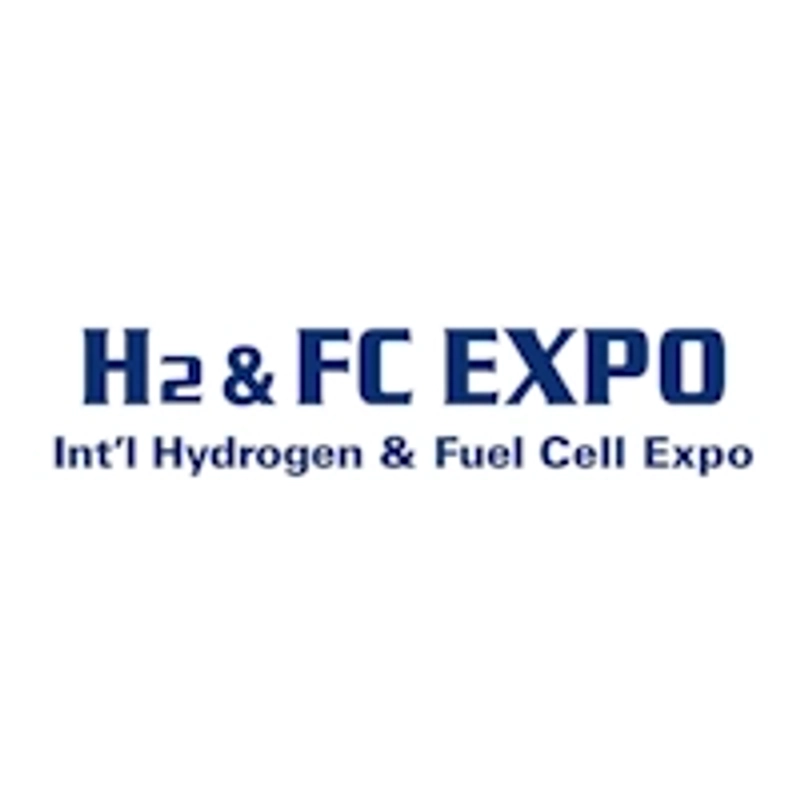
International Hydrogen & Fuel Cell Expo (H2&FC Expo)
The H2 & FC EXPO, formerly known as FC EXPO, stands as a premier international trade fair dedicated to hydrogen and fuel cell technologies. Held annually in March at Tokyo Big Sight, one of Japan’s most iconic and technologically advanced exhibition venues, this event has grown to become a vital gathering for stakeholders in the hydrogen energy sector. Since its debut in 2005, the fair has drawn experts, innovators, researchers, manufacturers, and decision-makers from around the globe, offering a unique platform to explore the latest advancements in hydrogen energy solutions.
The recent rebranding of the fair to H2 & FC EXPO, starting with the September 2023 edition in Chiba, underscores the rising significance of hydrogen as a key player in the global transition toward CO2 neutrality. As the world grapples with the challenges of decarbonizing industries, hydrogen has emerged as a versatile and essential energy carrier with the potential to revolutionize various sectors. From transportation and energy generation to industrial applications, hydrogen offers a cleaner alternative to fossil fuels, and its role in reducing greenhouse gas emissions is becoming increasingly critical.
This year’s event brings into focus the most cutting-edge developments in hydrogen and fuel cell technology. Key topics include the production, transport, storage, and utilization of hydrogen. The fair features a comprehensive range of exhibits showcasing innovative solutions that are advancing the hydrogen value chain. Attendees can expect to see the latest advancements in materials and components crucial for hydrogen fuel cells, such as electrolytes, ion exchange membranes, electrodes, catalysts, gas diffusion layers (GDL), and membrane electrode assemblies (MEAs). These components are at the heart of hydrogen fuel cell technology and play a pivotal role in enhancing efficiency and performance.
Equally important are the advanced testing and analytical technologies featured at the fair. With a focus on fuel cell evaluation, the event highlights specialized equipment for assessing the electrical properties of fuel cells, including single cell testing devices, power load equipment, impedance analyzers, and gas analysis instruments. These tools are critical for ensuring that hydrogen fuel cells meet the rigorous standards required for large-scale commercialization and integration into real-world applications.
Beyond the technology displays, H2 & FC EXPO serves as a collaborative space for industry leaders, policymakers, and innovators to discuss and strategize the future of hydrogen energy. The fair offers numerous opportunities for networking, knowledge sharing, and forging strategic partnerships that could propel the hydrogen industry forward. As hydrogen becomes a key component of the global decarbonization strategy, the fair is an invaluable resource for those looking to stay ahead in this rapidly evolving field.
In addition to showcasing the latest technologies and innovations, the event also highlights the significant investments and advancements in hydrogen infrastructure. Japan, a global leader in hydrogen research and development, continues to push the envelope in hydrogen adoption, making the H2 & FC EXPO a critical platform for anyone interested in tapping into the future of clean energy. The fair’s diverse array of exhibitors and participants ensures that attendees gain a comprehensive view of the hydrogen sector, from foundational materials to end-use applications.
H2 & FC EXPO is more than just a trade show—it is a key event in the global energy landscape, aligning with the growing push for sustainable energy solutions. As countries around the world prioritize reducing their carbon footprints, hydrogen fuel cell technologies will play an increasingly vital role in shaping the future of clean energy. This dynamic fair serves as both a showcase of the latest advancements and a catalyst for the collaboration necessary to drive hydrogen adoption on a global scale.


FOOTPRINT+
FOOTPRINT+: Leading the Way in Decarbonizing the Built Environment
In today’s world, the call for sustainability is louder than ever before. As we confront the challenges of climate change, the built environment—comprising buildings, infrastructure, and cities—has emerged as a key player in the global effort to reduce carbon emissions. One of the most important events dedicated to tackling these challenges is FOOTPRINT+, the world’s most advanced international conference for the decarbonization of the built environment. This pioneering event is at the forefront of exploring how technology, materials, energy systems, and data can collaborate to create a more sustainable future.
The Vision Behind FOOTPRINT+
FOOTPRINT+ is not just another conference—it's a transformative event that brings together some of the brightest minds in the property, technology, and environmental sectors to push the boundaries of what’s possible in reducing carbon emissions within the built environment. The conference has set an example in the UK’s rapidly advancing and increasingly integrated property and technology industries.
This event explores the synergy between technology, materials, energy systems, and data. These elements, when combined effectively, hold the key to drastically lowering the carbon emissions generated by buildings. As the world’s most advanced international conference on decarbonization, FOOTPRINT+ constantly breaks new ground by addressing these challenges head-on.
Why FOOTPRINT+ Is Crucial for Our Future
The built environment is responsible for a significant portion of global carbon emissions. From construction processes to the daily operations of buildings, emissions are generated at multiple stages. This makes decarbonization not just a choice but an urgent necessity for sustainable development.
FOOTPRINT+ aims to solve this problem by offering a platform where leaders from various sectors can collaborate and share their knowledge and innovations. The conference presents a unique opportunity to discuss cutting-edge technologies, innovative materials, and forward-thinking solutions that are driving the transformation of the built environment.
What to Expect at FOOTPRINT+
The upcoming FOOTPRINT+ conference promises to be a dynamic and inspiring event, attracting thousands of delegates from around the world. In less than six weeks, at Old Billingsgate, attendees will have the opportunity to participate in a multifaceted experience. With seven vibrant conference stages, each focusing on different aspects of decarbonization and sustainability, the event will offer a comprehensive overview of how to reduce carbon emissions in the built environment.
Key Features of the Conference
Bespoke Installations
The conference will feature tailored installations that showcase the latest innovations in sustainable building materials, energy systems, and technologies. These installations will allow delegates to see firsthand how new developments can be integrated into the built environment.
Inspirational Design Forum
The design forum is one of the most anticipated components of the event. Here, leading designers and architects will discuss how the aesthetic and functional aspects of buildings can align with sustainability goals. From green roofs to passive design, the forum will explore how thoughtful design can contribute to reducing carbon emissions.
Unmissable Networking Events
Networking is one of the cornerstones of FOOTPRINT+. The event will offer numerous opportunities for delegates to meet industry leaders, forge new partnerships, and discuss potential collaborations. These networking sessions will be key to fostering the collaboration needed to drive large-scale decarbonization efforts in the built environment.
Engaging Discussions and Expert Panels
With industry experts and thought leaders at the forefront, delegates will engage in discussions on a range of topics, including the latest advancements in energy-efficient technologies, sustainable construction methods, and smart building systems. These panels will provide valuable insights into the practical steps needed to reduce carbon emissions in buildings.
FOOTPRINT+ and the Future of Sustainable Cities
At the core of FOOTPRINT+ is the idea of building sustainable cities. As urbanization continues to rise, cities are responsible for an increasing share of global emissions. By focusing on decarbonizing the built environment, FOOTPRINT+ aims to provide a roadmap for making cities more sustainable, energy-efficient, and resilient to climate change.
One of the most significant challenges in creating sustainable cities is the need for integrated solutions. FOOTPRINT+ explores how different sectors—architecture, technology, energy, and data science—can work together to address this challenge. The integration of smart building technologies, renewable energy sources, and efficient materials is key to reducing emissions and creating cities that are not only livable but also environmentally responsible.
The Role of Technology in Decarbonizing the Built Environment
Technology plays a pivotal role in the journey toward decarbonization. Innovations such as energy-efficient HVAC systems, renewable energy integration, and data-driven management platforms are already transforming how buildings consume energy. At FOOTPRINT+, the latest technological breakthroughs will be highlighted, showcasing how these solutions are changing the landscape of construction and building operations.
Energy Systems: A Central Focus
Energy systems are one of the most critical components of sustainable buildings. FOOTPRINT+ will explore how advanced energy management systems can help buildings reduce their energy consumption while maintaining comfort and functionality. The integration of smart grids, energy storage, and renewable energy sources will be key topics discussed at the conference, providing attendees with insights into how energy systems can be optimized for greater sustainability.
Materials for the Future of Sustainable Building
The materials used in construction have a massive impact on the carbon footprint of a building. From carbon-intensive concrete to low-impact wood and recycled materials, the choice of materials is crucial in minimizing emissions. At FOOTPRINT+, experts will discuss the role of sustainable materials in construction, highlighting innovations such as low-carbon concrete, bio-based materials, and modular construction techniques that can reduce waste and energy consumption.
The Power of Data
Data is another key element in the journey to decarbonization. With the advent of smart buildings, data analytics and sensors are becoming essential tools in monitoring and reducing energy usage. FOOTPRINT+ will feature discussions on how building managers can leverage data to optimize building performance, reduce waste, and enhance occupant comfort. Real-time monitoring and predictive analytics will be key topics at the conference, showcasing how data-driven solutions can drive down carbon emissions.
Moving Forward: The Road to Net Zero
One of the central themes of FOOTPRINT+ is achieving net-zero emissions in the built environment. As the world moves toward more stringent climate goals, the construction and operation of buildings must adapt to meet these targets. The conference will provide a platform for discussing the strategies needed to achieve net-zero buildings, from energy efficiency improvements to the integration of renewable energy systems and carbon capture technologies.
Policy and Regulation
In addition to technological innovations, policy and regulation play a crucial role in decarbonization efforts. FOOTPRINT+ will also feature discussions on the regulatory frameworks and incentives needed to accelerate the transition to sustainable building practices. By working together with policymakers, the private sector can create the conditions necessary for large-scale change.
Conclusion: The Future of Decarbonization
FOOTPRINT+ represents a major step toward achieving a decarbonized built environment. By bringing together stakeholders from across the property, technology, and sustainability sectors, the conference fosters collaboration and innovation that can drive significant change. The event's focus on technology, materials, energy systems, and data highlights the critical components required to reduce carbon emissions in buildings and create a more sustainable future.
As we look toward the future, the knowledge and partnerships formed at FOOTPRINT+ will help accelerate the transition to sustainable cities and net-zero buildings, contributing to a greener, more sustainable planet. By embracing these advancements and working together, we can create a built environment that is not only efficient but also environmentally responsible. The journey toward decarbonization is complex, but with continued innovation and collaboration, we can build a more sustainable future for generations to come.
